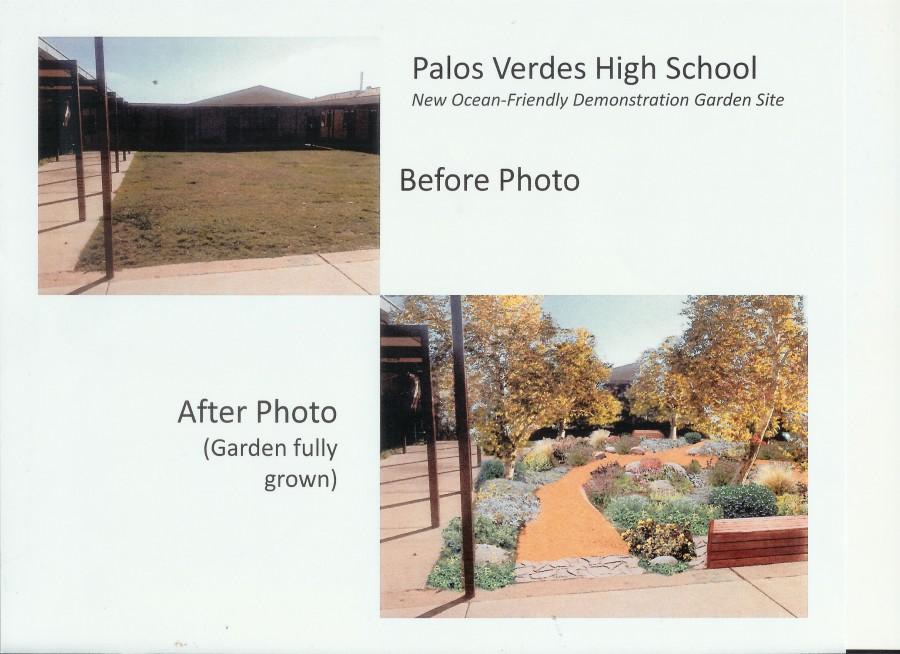With the amount of changes around campus this year, from new classrooms to Capstone to BYOD and more, it isn’t surprising that these new ventures aren’t over. One more project to modify the beautiful Palos Verdes High campus has a more central focus on the environment and sustainability
This development takes the form of an ocean friendly garden that will help save nature’s valuable resource and protect the coast’s water.
Funded from grants provided by various agencies, West Basin Municipal Water District, The Surfrider Foundation, and South Bay Environmental Services Center to name a few agencies, the addition will be located in the open grass space between the old 500s portables close to Senior Park.
PV High will be just one of the many Ocean Friendly Gardens located in the south bay and will be one of the few high schools implementing this idea along with Redondo Union High School whose garden was completed a few months ago.
Though construction had been planned to have been almost through, the new estimated time for the spaces finish is closer to the beginning of March.
The hired contractor is set to work for a few weeks in February on the fundamentals of the garden, and then Mrs. Moeller’s fifth period environmental science class will be implementing drip lines, planting plants, and making the finishing touches while learning about the goals of the project.
“The hope is that students learning how to do it might then take the ideas home and get an ocean friendly garden,” said Jill Moeller the environmental science teacher
The Surfrider Foundation’s main concerns for its Ocean Friendly Garden program are conservation, permeability, and retention.
The top source of ocean pollution is urban runoff containing synthetic fertilizers, pesticides, herbicides, fungicides, automobile oil and exhaust, sediment from soil, and bacteria, that can possibly threaten not just the marine life and the ecosystem, but poison humans.
Water usage is also a huge concern all over the world and in our community the gardens will help lower the school’s footprint.
The garden will contain native plant species of vegetation in order to require less watering and will also be built to captures the rain water.
This saving of water not only prevents runoff containing sediment, fertilizer, and more from contaminating the ocean, but also may help recharge the areas groundwater while using the stored water to keep the garden healthy.
Possibly down the road the garden may also help inspire future Sea Kings to create small scale gardens around campus and get rid of non-native grass.
An interesting concept of the development is it has been designed based on multiple observations by architectural students. Watching the habits of our Sea Kings, they noticed that most students walked across and through the grassy space instead of around it on the concrete paths, and then planned for walkways cutting through the garden. A further trend seemed to be that many kids sit on the ground leaning against the lockers or poles and that will be put in the plans.
In the future the Garden can be used to teach students, especially those in Environmental Science, the benefits of ocean friendly developments and how the school can contribute to conservation through hands on workshops.
Another hope is that the community can also learn and be encouraged to go ocean friendly through workshops demonstrating its benefits. “The point of the gardens is to educate the public,” agrees Moeller.
With any luck the schools step towards water sustainability
Senior Macy Mangan approves, “I think it is great that these associations have given back to the school and hope people take advantage of the new garden.”
PV is very thankful for the generosity and hopes to countine to work with them.
Garden Waiting to Save the Local Ocean
Colette Garcia, Staff Writer
February 12, 2014
Story continues below advertisement
